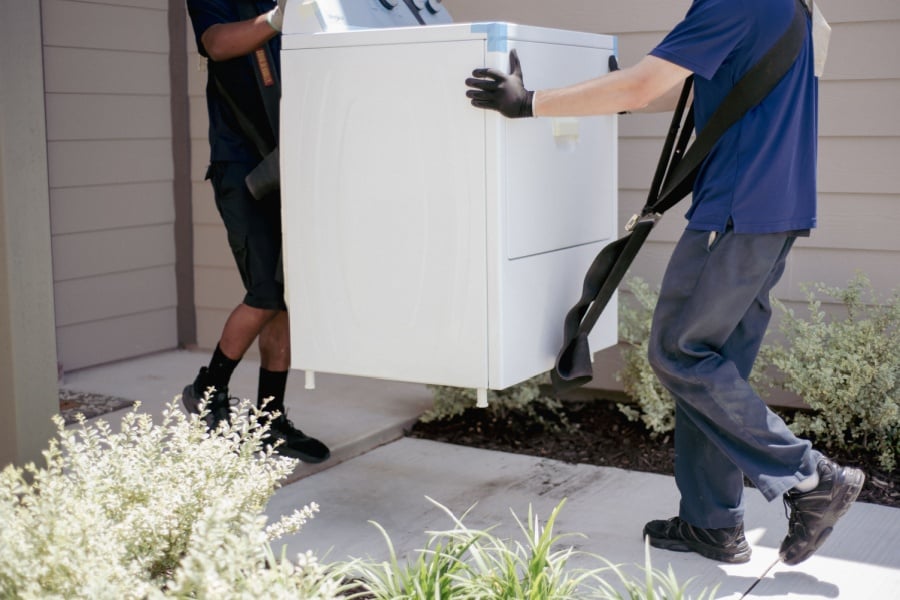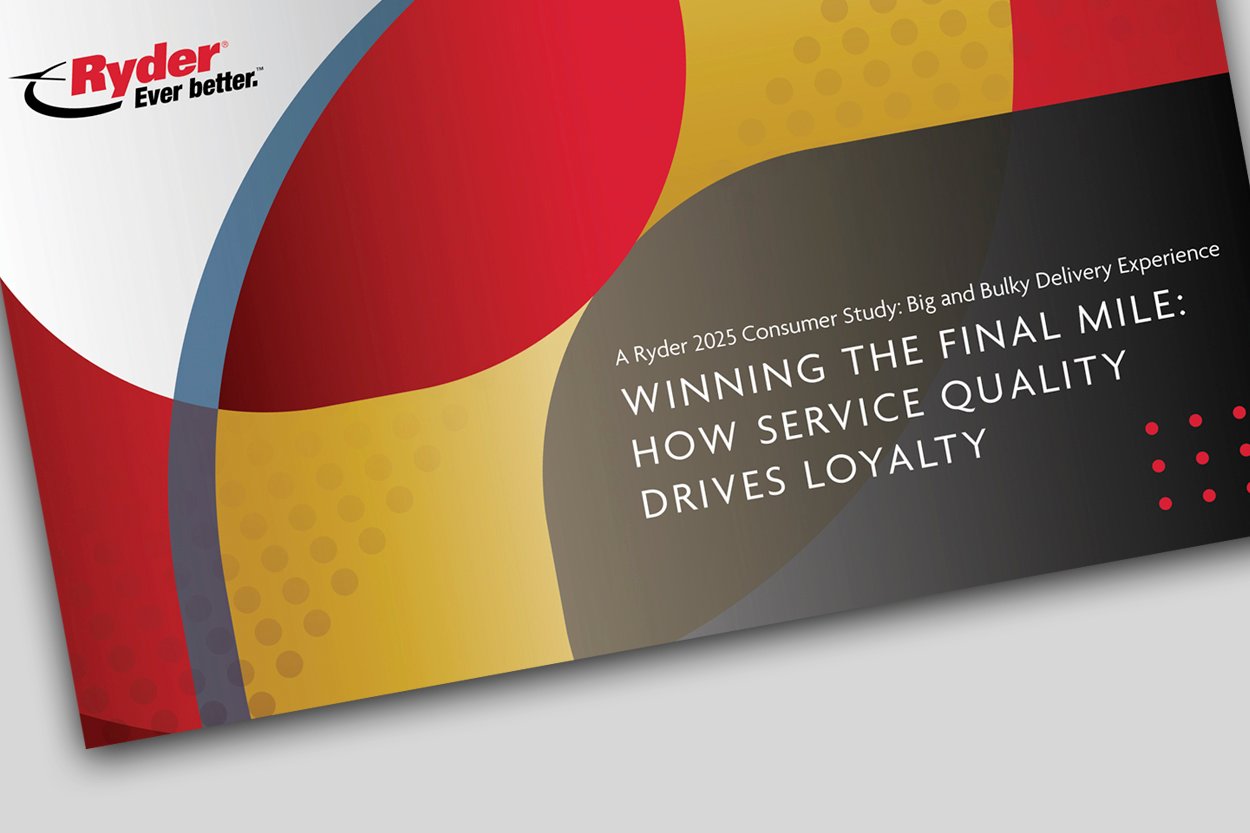Updated May 21, 2025
As we step into 2025, the last mile delivery landscape continues to evolve, driven primarily by the pressing need to satisfy customers' expectations for prompt and reliable deliveries. The last mile, which many argue is the most critical mile, presents multifaceted challenges. Urban congestion, fluctuating consumer demands, labor shortages, and the need for cost-efficient solutions pose hurdles in ensuring consistently on-time deliveries.
Last mile delivery for big and bulky items is rapidly evolving. Whether you’re delivering to the front door or using a white glove delivery model, today’s last mile landscape is driven by technology, customer expectations, and the need for efficiency. With advancements in visibility solutions, self-scheduling options, forward deployment strategies, and pay-as-you-go delivery models, companies can revolutionize their last mile operations and meet the demands of today's consumers.
In the article, we delve into the top four trends shaping last mile delivery this year with a laser focus on meeting consumer demands, building brand loyalty, and optimizing your operation.
Trend 1: Precision Timing and Speed
The foremost trend dominating last mile delivery is on-time delivery and speed to consumer. At the heart of it lies customer satisfaction, where aligning with the fast-paced expectations of today's consumers is paramount. Delivering swiftly and reliably not only meets these expectations but also cultivates positive experiences, nurturing trust and brand loyalty among customers. Predictable deliveries also play a pivotal role in minimizing disruptions, preventing delays that could lead to dissatisfaction or additional costs for businesses. This predictability lets consumers plan their availability, minimizing the time they need to take out of their day and ultimately reducing instances of missed deliveries or failed attempts.
Operational efficiency is another key facet impacted by precise timing and predictability. Accurate delivery forecasts enable better resource allocation, optimized routes, and reduced idle time for delivery vehicles and personnel. Such predictability aids in efficient inventory management, preventing overstock or stockouts and ensuring optimal use of storage space. Cost management benefits from these streamlined operations as well, with reduced expenses tied to redelivery attempts, customer complaints, and rush orders because of delays.
From a competitive standpoint, companies offering fast and predictable deliveries gain an edge, setting themselves apart in a market where punctuality wins. This predictability becomes a crucial selling point, attracting customers seeking reliability amidst a myriad of choices. Ultimately, these elements of timing, speed, and predictability in Last Mile Delivery not only satisfy immediate customer needs but also establish businesses as dependable and credible entities in an increasingly competitive landscape.
Trend 2: Real-Time Tracking for Transparency
Real-time tracking technology for last mile delivery is gaining ground as a critical tool to provide consumers with transparent and accurate information about their deliveries. Integrating advanced tracking systems enables customers to monitor their orders in real time. This technology not only meets the expectation for visibility but also instills confidence by keeping customers informed at every stage of the delivery process.
Real-time track and trace technology emerge as a standout trend that not only addresses challenges but also directly caters to consumers' desire for on-time deliveries. By empowering customers with real-time updates on shipment status, estimated arrival times, and interactive tracking interfaces, this technology enhances transparency and ensures that customers are well-informed, reducing anxiety about delivery times.
Trend 3: Efficient Inventory Management
Efficient inventory management is pivotal in meeting on-time delivery goals. Companies are leveraging data analytics and AI-driven systems to maintain optimal inventory levels closer to consumers, reducing delivery times and ensuring products are readily available for swift dispatch.
In last mile delivery, forward deployment is a key aspect of inventory management and reducing order cycle times. Forward deployment provides a faster and more agile system for meeting and exceeding customer expectations while reducing costs. When inventory is closer to customers, orders are processed and fulfilled faster. Businesses can pick the products that are in the distribution center that’s nearest to the purchaser, making that two- to three-day shipping goal that much easier to meet.
This strategy proves effective for a variety of inventory forms, whether its oversized skids that need flatbeds and specialized loading machinery or palletized freight on its way to retail outlets. But for this all to work, a regional partner with the bandwidth and experience is vital.
Effective inventory management ensures that the right products are available at the right place and time, especially crucial in the final stretch of delivery. By strategically placing inventory closer to end consumers, you can expedite deliveries, reduce lead times, and meet the ever-heightening expectations for swift service.
In the last mile delivery landscape, where variables are prone to rapid fluctuations, precise inventory management is the linchpin for adaptability. It allows you to respond swiftly to changing demands and market trends. Real-time visibility into inventory levels empowers decision-makers to forecast demand accurately, adjust stocks and fine-tune logistics strategies. This adaptability not only ensures that customers receive their orders promptly but also helps companies optimize their resources, reduce operational inefficiencies, and maintain a competitive edge in an environment where agility and responsiveness are indispensable.
Trend 4: The Rise of AI and AR
Artificial intelligence (AI) is taking supply chain management by storm, and last mile logistics are not being left out. According to Global Research, they project the generative AI logistics market to skyrocket to a whopping $14 million by 2032. Industries across the board are jumping on the generative AI bandwagon to fine-tune their operations and level up their game.
Big players dealing with massive logistics are eyeing generative AI as the ticket to supercharge their final mile deliveries and make their resources work smarter, not harder. According to McKinsey, 55% of supply chain organizations have already invested in AI in day-to-day operations.
AI and automation are reshaping the last mile delivery landscape by optimizing route planning, predicting delivery times, and enhancing overall efficiency. By leveraging machine learning algorithms and robotics, companies can streamline operations, minimize errors, and improve delivery accuracy.
Optimizing Last Mile Delivery through Third-Party Logistics Providers
To excel in meeting on-time delivery demands, partnering with specialized third-party logistics (3PL) providers proves invaluable. 3PLs bring in-depth knowledge, specialized resources, and advanced technologies dedicated to streamlining the last mile. Their expertise in optimizing routes, white glove delivery, managing inventory efficiently, and providing superior customer service can significantly elevate a company's ability to meet on-time delivery commitments.
By collaborating with a trusted 3PL partner, businesses can focus on fulfilling consumer demands for on-time deliveries while benefiting from streamlined logistics operations and enhanced scalability.
The last mile delivery landscape of 2025 revolves around meeting consumer demands for on-time deliveries. To succeed in this highly competitive space, companies must embrace trends that prioritize precision timing, transparency through real-time tracking, flexible delivery options, and efficient partnerships.




